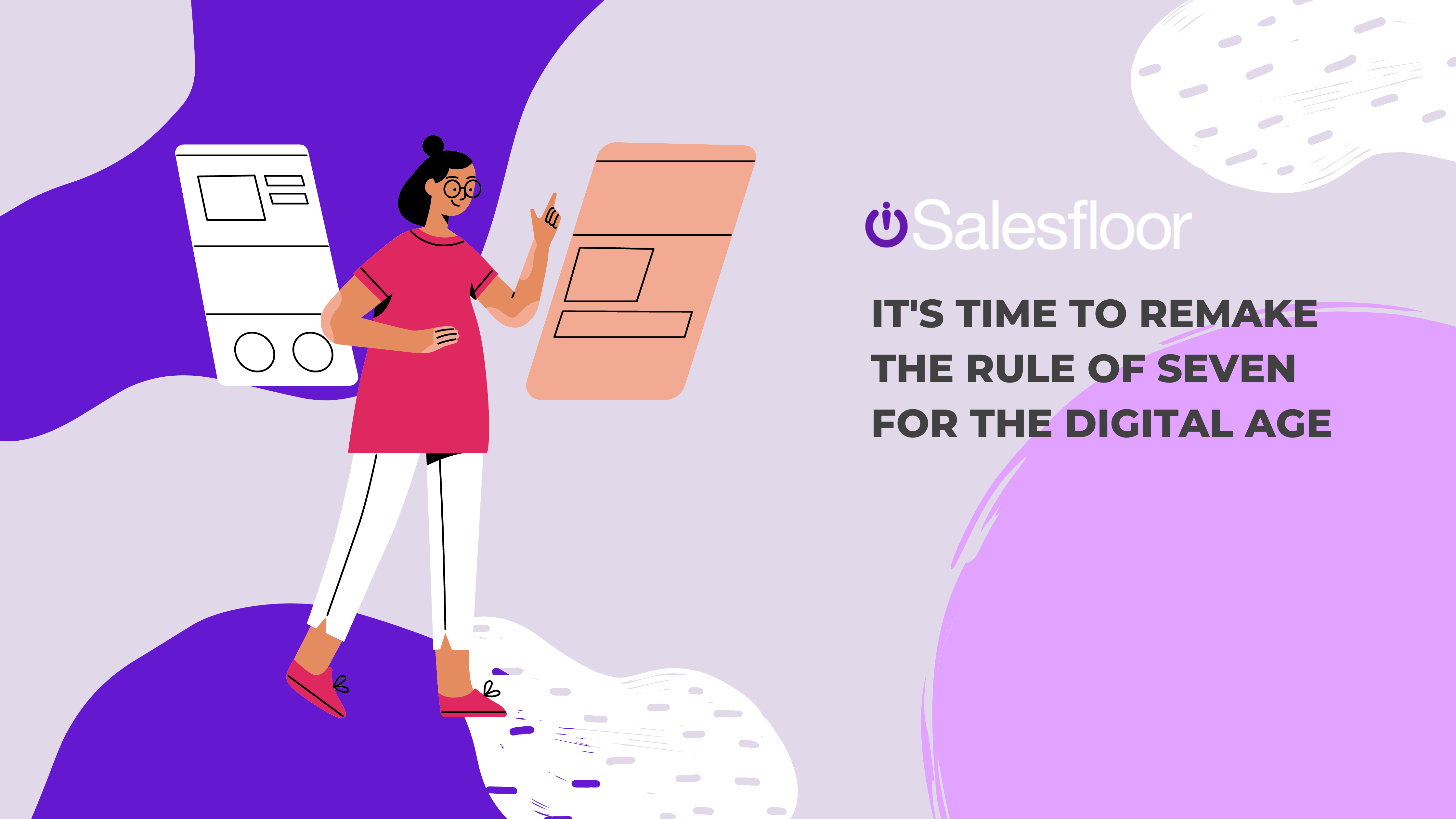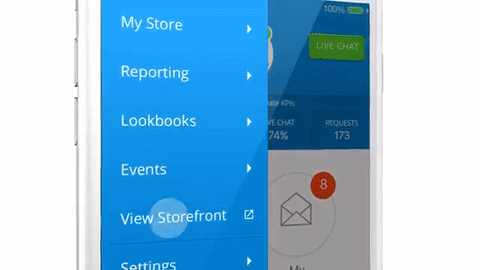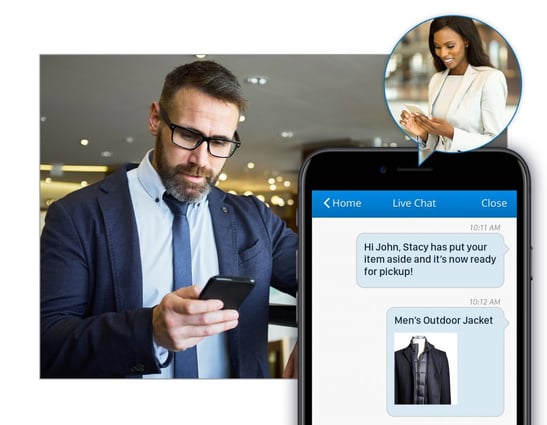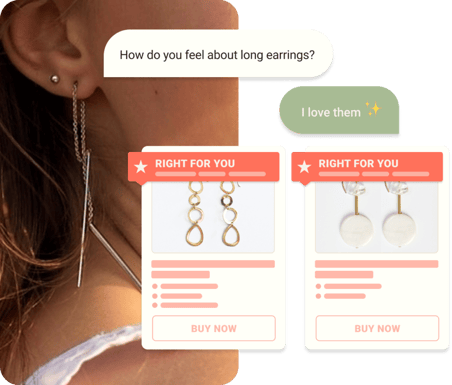
For almost a century now one of the main maxims of marketing has been the famous “Rule of Seven.” It almost sounds like a movie title, which is apropos since it originated in Hollywood way back in the ‘30s. Studio executives of the day discovered people need to hear multiple marketing messages to persuade them to see any given film.
Seven times, according to said rule. It’s an axiom that quickly found traction among marketers of all stripes, retail or otherwise, and has influenced how retailers market to the public for almost a century now.
To be fair, the Rule of Seven may be old, but it’s not out-of-date by any means. If anything, in a world saturated with marketing messages, the Rule of Seven is even more important than ever. If you’re not getting your message out there often enough, it’s likely being drowned out by the chorus of other marketers competing for your share of the market.
More Important Than Ever
However, considering how the world, society, and particularly technology have evolved over the last 90+ years, it’s folly to think of the Rule of Seven as exclusively a marketing maxim. The way consumers make purchasing decisions has changed dramatically. We search for a product online, then read reviews. Maybe we will visit the store and talk to an associate. We might forget for a few days until an online ad reminds us of that item in a cart or the brand’s social media posts point out a promotion that is about to expire. It’s oftentimes a long, winding road from contact to conversion. These days, it might be better to think of those seven messages as seven interconnected touch points.
It's also easier than ever for customers to take their business elsewhere. According to the Baymard Institute almost 70% of online shopping carts are abandoned. The reasons are varied but the mechanism is simple; after all, online customers can click away on a whim. That’s why it’s more important than ever to make sure you’re providing not just an exceptional but also unified customer experience, including personalized suggestions, guided selling, and access to live in-store sales associates through every sales channel. Indeed, despite the increased competition for audience attention, the modern shopping experience makes getting some of those seven messages out easier than ever.
Powered by Personalization

For a long time and driven by tales of malfeasance around its use, providing personal information to business entities was met by strong resistance. However, it seems attitudes are changing. Salesforce reports that 61% of millennials are willing to allow businesses access to their personal information provided it’s used to power better services and experiences. The market research firm Epsilon also weighed in on the subject, revealing that 80% of a thousand-strong research study indicated they were more likely to purchase from businesses that offer personalization, and 90% of them found personalization appealing even if it didn’t impact their willingness to shop with a given retailer.
Of course, you’re going to need to be able to leverage that data in accordance with your clients’ expectations. That means providing valuable services and products they actually want. No one wants an inbox or message center bombarded with meaningless promotional material they’re not interested in. With the so-called digital age in full swing and access to truly immense amounts of data, retailers can empower their associates to connect with their customers in more meaningful, personalized ways. Forbes (for one) envisions retailers using tablets updated with real-time data to better inform associates about customer preferences.
The point? Messaging doesn’t just have to be constant and consistent like back in the 30s. Nowadays it needs to be personalized and provide value as well.
Bringing the In-Store Experience to Life Online
 Salesfloor connects online customers with your local associates and brings the in-store experience to life online.
Salesfloor connects online customers with your local associates and brings the in-store experience to life online.
With 87% of shoppers beginning their shopping process online according to Retail Dive, it’s crucial that your online experience reflects your commitment to customer experiences. After all, your marketing department will be responsible for delivering most of your messaging, but your stores, both brick & mortar and online, need to support those efforts by providing an exceptional CX and supporting your marketing messaging. That’s easy once your customers are in the door and in the hands of presumably well-informed and friendly associates. It’s a bit more difficult when they’re navigating a web store.
That’s where advanced applications that can connect online customers to real life associates can be a boon to your business. For example, Salesfloor features guided-selling options that allow associates to make personalized recommendations and build baskets for customers as if they were right there with them in the store. Direct lines of communication between online customers and brick & mortar stores also enables associates to directly reinforce messaging using a personal touch.
The Art of Conversation

Presuming your customer base is large enough to make personalizing messaging and promotions for all of your clients too large a task to tackle manually, then it’s time to turn to technology again. Artificial intelligence and machine learning didn’t exist for retailers, even as a concept, back in the 30s. Now, retailers can hook AI-powered chatbots directly into their websites with little more than the click of a few buttons.
Automat is a great example; their developers carefully created (more like sculpted) an AI that inquires about customer preferences, listens to and analyzes their responses, and makes personalized recommendations. What’s more, the technology can actually create personalized webpages for each customer. Letting bots master the art of conversation to tailor messaging and deliver it directly to customers can be a powerful tool for fixing your brand firmly in your customers’ minds.
There’s no denying that the Rule of Seven is mostly meant for marketers, and to be honest it’s really more a guideline than a rule. Each customer’s purchases will be motivated differently and require different tactics and touchpoint totals to convert. Nevertheless, nowadays every consumer-facing aspect of your business (and some of the non-facing ones) should at least have the capability of reinforcing messaging and personalizing recommendations. Whether by empowering live associates to connect with online customers or handing off the task to affable AIs, it’s more important than ever for retail executives to update how they apply the rule of seven rather than write it off as a relic from an earlier time.
Prepare for the Future
In the digital age, the need for personal connections between brands and consumers is vital to business success. Evolving the traditional retail business model is challenging, but Salesfloor can help. Learn more about how Salesfloor is helping the most recognizable names in retail to design immersive virtual customer experiences that transcend channels.



